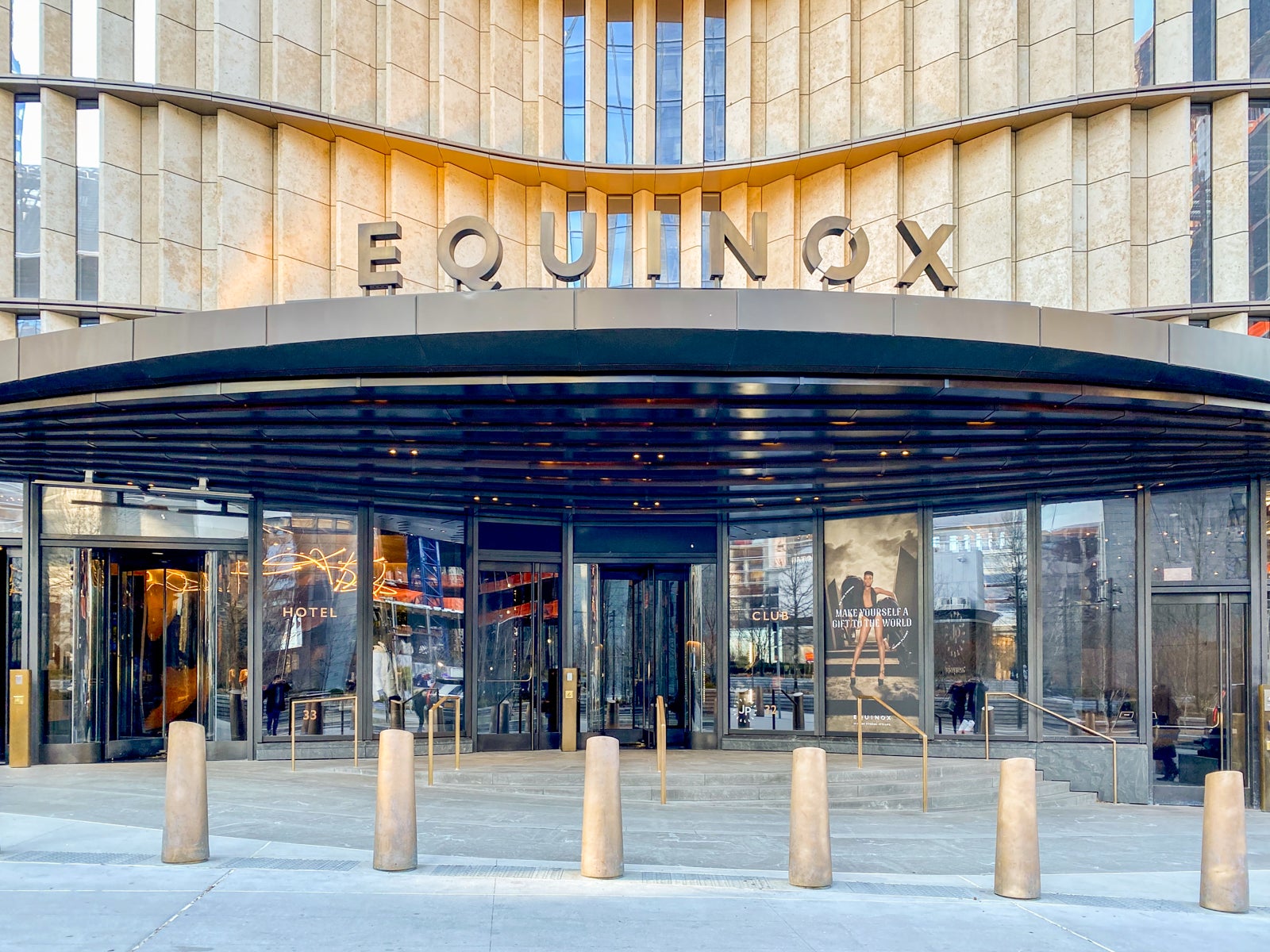Is the Amex Platinum still the king of premium rewards cards?
For nearly 40 years, The Platinum Card® from American Express has been a leader in the premium rewards card market.
The card’s list of pros is impressive, with over 20 transfer partners, a plethora of statement credits and, of course, being made of metal. However, the Amex Platinum has one of the highest annual fees in the industry — $695 (see rates and fees) — making consumers wonder whether it is still the king of premium rewards cards.
Both the Chase Sapphire Reserve® and the Amex Platinum have been in a neck-and-neck race for the title of the best premium rewards card since the launch of the Reserve in 2016. Sure, there are other premium airline or hotel cobranded cards, but they inherently appeal to a more limited audience. There’s also the Capital One Venture X Rewards Credit Card that was more recently introduced into the sphere of credit cards and is certainly affecting how we view premium credit cards.
As someone who has the Amex Platinum and Sapphire Reserve, I’ll break down how the Platinum card fares against competitors, considering the welcome bonus, annual fee and perks. As you can see below, it’s a bit more complicated than simply the welcome offer itself. Let’s dive in.
Related: Amex Platinum vs. Chase Sapphire Reserve: Which $550-plus card is right for you?
Why the Amex Platinum is the king of premium cards
Several arguments can be made in favor of the Amex Platinum and why, after all these years, it’s still an aspirational card for people, especially points and miles enthusiasts.
Lounge access
American Express was the first issuer to create its own network of lounges, jump-starting the trend for other issuers to follow. American Express has a sizable network of over 20 lounges worldwide.
For those who don’t often fly in premium cabins or lack airline status or membership to a carrier’s network of lounges (e.g., Admirals Club or United Club), Amex Centurion Lounge access is an excellent perk for Amex Platinum cardmembers. Despite other credit cards offering Priority Pass access, Centurion lounges offer a more elevated experience with chef-inspired meals, full bars and an elegant ambience.
As an Amex Platinum cardmember, I often utilize the Centurion Lounge at Los Angeles International Airport (LAX) for domestic and international itineraries. In this regard, the Amex Platinum has the upper hand against the Sapphire Reserve and the Venture X.

Daily Newsletter
Reward your inbox with the TPG Daily newsletter
Join over 700,000 readers for breaking news, in-depth guides and exclusive deals from TPG’s experts
Related: Everything you need to know about accessing Amex Centurion lounges
Statement credits
The Amex Platinum offers an impressive list of statement credits, providing cardmembers with over $1,500 in value each year. The statement credits I find most valuable are up to $200 in Uber Cash (You must have downloaded the latest version of the Uber App and your eligible American Express Platinum Card must be a method of payment in your Uber account), an up to $200 statement credit for Amex Fine Hotels + Resorts or The Hotel Collection bookings(minimum two night stay), an up $100 statement credit at Saks Fifth Avenue, the up to $20 monthly digital entertainment credit, and an up to $189 statement credit for a Clear Plus membership. Enrollment is required for select benefits.
When utilized to their fullest extent, the Amex Platinum’s statement credits have a value of more than double the $695 annual fee (see rates and fees) you have to pay. As an Amex Platinum cardmember, I appreciate the savings the card can provide, especially compared to its competitors.
The Sapphire Reserve and Venture X each offer an annual $300 travel credit, effectively reducing each card’s cost. However, that’s the extent of the savings, so you won’t value more than what you will pay for the annual fees.
Earning rates
It may seem controversial to say the Amex Platinum shines in its earning rates, but I’d like to focus on receiving points for airfare purchases.
Cardmembers earn 5 points per dollar spent on purchases made directly with airlines or through American Express Travel (on up to $500,000 in purchases annually), 5 points per dollar spent on prepaid hotels through amextravel.com, and 1 point per dollar spent on all other purchases. According to TPG’s July 2024 points valuations, Amex Membership Rewards points are worth 2 cents each.
Sapphire Reserve cardholders earn 5 points per dollar spent on airfare purchases, and Venture X cardholders earn 5 miles per dollar spent on airfare purchases, but there’s a huge caveat — you only earn rewards at those rates when booking through their respective travel portals. These travel portals are online travel agencies and they serve as the middleman between you and the carrier. In the case of schedule changes, flight cancellations, voluntary changes or travel disruptions, you’re at the mercy of the OTA and its rules or restrictions.
The Amex Platinum’s ability to earn 5 points per dollar spent on purchases made directly with an airline cuts out the middleman while also giving it the highest earning rate in the industry. For this reason, I find the card to still be the king of premium cards, which is why I charge airfare purchases over $500 to my Amex Platinum. This way, I am able to earn a hefty number of points when purchasing airfare in premium cabins.
Related: Reasons to avoid booking through an online travel agency
Transfer partners
American Express has 21 transfer partners, the most of any issuer. Earning Membership Rewards points can be quite useful and perhaps even more appealing than earning Chase Ultimate Rewards points or Capital One miles.
American Express has transfer partners that other issuers lack, such as ANA Mileage Club and Delta SkyMiles, and partners that are more difficult to find with other issuers, such as Qatar Airways Privilege Club and Hilton Honors.
Related: American Express Membership Rewards transfer partners: Maximize your points
Why the Amex Platinum is not the king of premium cards
Coupon book-style statement credits
Despite the Amex Platinum offering over $1,500 in statement credits to cardmembers, not all of these credits are easily redeemable or even applicable to many people.
For example, the card offers a $300 Equinox credit, which I was able to utilize for six weeks’ worth of membership; however, those who do not have an Equinox within their city or do not enjoy online training classes from an Equinox+ membership will not gain value from this statement credit. Enrollment is required.
Additionally, while many credits provide savings, some have restrictions. The credits have their own terms and limitations, and they provide money for services you may not have necessarily bought on your own, thus encouraging you to spend money on things you did not need in the first place.
Poor earning rate for everyday spending
Although the Amex Platinum offers an impressive 5 points per dollar spent on airfare and hotels booked through amextravel.com, the card has no other bonus categories. All other purchases outside these two will earn 1 point per dollar spent, a poor rate of return on a premium card. As a cardmember, you’ll be missing out on earning bonus points in other travel categories and on dining purchases at restaurants (takeout and delivery included).
Meanwhile, the Sapphire Reserve earns a solid 3 points per dollar spent on dining purchases, and dining is defined broadly. I earn 3 points per dollar spent at sit-down restaurants, coffee shops and fast-food chains, as well as when ordering Uber Eats.
In this regard, the Venture X also triumphs over the Amex Platinum, thanks to earning 2 miles per dollar spent on all purchases outside its bonus categories.
Related: The best dining credit cards
Restrictive lounge access policy
Amex Platinum cardmembers can access Centurion lounges; however, American Express tightened its guest policy in 2023. Guests accompanying cardmembers pay $50 for adults and $30 for children between the ages of 2 and 17. Children under 2 can enter for free with an accompanying adult.
To avoid paying for guests, Amex Platinum cardmembers must spend $75,000 each calendar year, a hefty sum for many people.
Additionally, Amex Platinum cardmembers have access to Delta Sky Club lounges, which will soon be limited, too. Beginning Feb. 1, 2025, cardmembers will receive only 10 Sky Club visits per program year when flying on Delta-operated or -marketed flights — unless they spend significantly.
Despite taking the lead in issuer-based airport lounges, Amex’s changes to lounge access have lowered its place on the totem pole, with recent competitors moving up. Venture X cardholders can bring two guests to Capital One lounges, and authorized users can bring two of their own guests, too.
As an Amex Platinum cardmember, the lounge restrictions have been a pain point. I often travel with my family, and if we aren’t flying in a premium cabin for international flights, paying $80 for lounge access is out of the question.
Related: A guide to guest policies for airport lounges
Travel insurance
While the Amex Platinum tends to offer higher limits for travel insurance like trip delay insurance, cancellation and interruption insurance, and baggage insurance than mid- and lower-tier Amex cards*, the Sapphire Reserve outshines its competitor here. It offers the same coverage for trip delay insurance, but its baggage insurance is slightly better.
*Eligibility and Benefit level varies by Card. Terms, Conditions and Limitations Apply. Please visit americanexpress.com/benefitsguide for more details. Underwritten by New Hampshire Insurance Company, an AIG Company.
Furthermore, car rental insurance is far more comprehensive on the Sapphire Reserve than the Platinum. The Platinum does not cover car rentals in Australia, Italy or New Zealand, but the Sapphire Reserve does. This benefit was useful when I visited Australia and New Zealand last winter, so I used my Sapphire Reserve to protect my car rental.
Bottom line
The Amex Platinum was the original premium travel rewards card — decades before the Sapphire Reserve or Venture X launched. With the Chase Sapphire Reserve, Amex Platinum and Venture X differing in terms of annual fees and benefits, the competition among these three cards has gotten much more interesting. Ultimately, each of these cards offers a very different set of perks that will appeal to different types of customers.
My take is that those looking for luxury travel in the long term will likely fare better with the Amex Platinum, while those looking for a more straightforward premium card will do better with the Sapphire Reserve or Venture X.
Learn more by checking out our full reviews of the Amex Platinum, Sapphire Reserve and Venture X.
Apply here: Amex Platinum
Apply here: Chase Sapphire Reserve
Apply here: Capital One Venture X
You may also want to check the CardMatch Tool to see if you’re targeted for a higher welcome bonus. These offers are subject to change at any time.
For rates and fees of the Amex Platinum card, click here.















